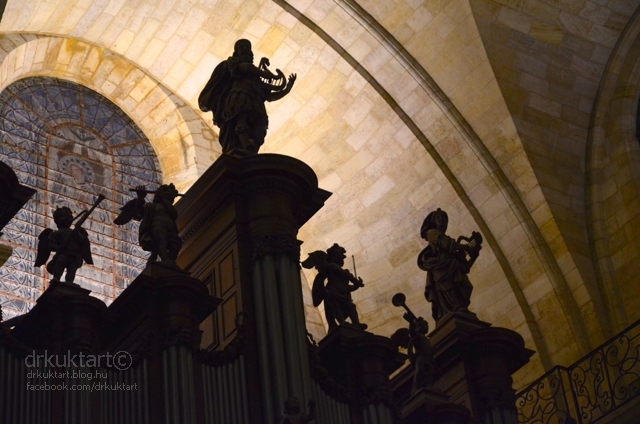
A Bordeaux-i utcakép egyedülálló megjelenéséhez a vallási építészet is sokkal járul hozzá. A város számos különböző stílusú és korú templommal büszkélkedhet, ebből jópárba volt szerencsénk belépni, míg akadt, amelyet csak kívülről volt módunk megcsodálni. Közös bennük, hogy fennállásuk akármilyen régre is tekint vissza, a nagyon is mai utcaképnek mégis meghatározó, ugyanakkor szerves részét képezik ezek a hatalmas templomok. Nem győzöm hangsúlyozni: Bordeaux építészete csodálatos!
The streets of Bordeaux are unique, thanks for the city's unique architectural heritage, including its churches, cathedrals and basilicas as well.
#1 La Cathédrale Saint-André de Bordeaux
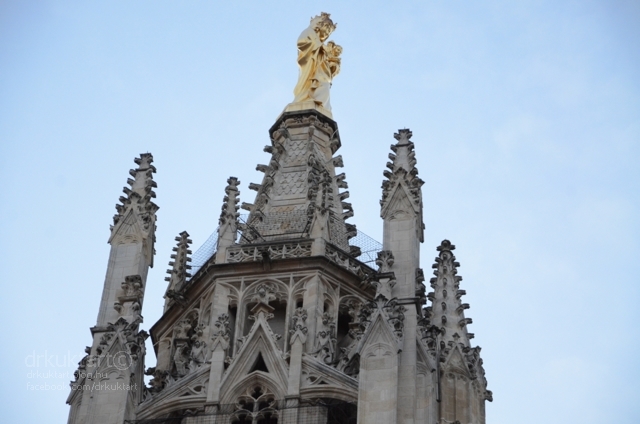
A Saint André Katedrális (La Cathédrale Saint-André de Bordeaux) szerényen „A” Bordeaux-i Katedrális maga. A székesegyház honlapja annyira szűkszavú az épület történtét illetően, hogy semmit nem találtam róla, helyette olvashatunk viszont a hitéletről, koncertekről és nézegethetünk képeket. Ottjártunkkor a templom belsejében restaurátori munkák folytak. A székesegyház gótikus stílusban épült épülete 1998 óta a Világörökség részét képezi. Az épületről szóló első írásos emlékek 814-ből származnak, de ez az épület 848-ban valószínűleg elpusztult. A XI. században a katedrálisba érkeztek Saint Macaire, Bordeaux neves püspöke ereklyéi. Az első, Saint-André-nak szentelt, még román stílusban épült épületet 1096-ban II. Orbán pápa szentelte fel. Az épület latin kereszt alakú alaprajza nyugat-kelet felé tájolt. A templomhajó 124 méter hosszú és 23 méter magas. A 23 méter hosszú kereszthajó a főhajónál magasabb a kórus fölötti 29 méterével. A Bordeaux-i régióban igencsak szokásos módon, itt is a templomtól különállóan található meg a Pey-Berland harangtorony Bordeaux püspökének nevét viseli, aki 1440 körül megalapította a város első egyetemét. Teste ma a katedrális oltára mögött pihen. Eredetileg a templomtornyon nem állt szobor, és jóval magasabb volt a jelenlegi méreténél, de egy, a XVIII. században tomboló rendkívüli vihar megkárosította a tornyot, amelyet eredeti állapotába a mai napig nem állítottak vissza. Ekkor határoztak a ma is látható szobor felállításáról, amelyet Pey-Berland iránti tiszteletből származási helye a Médoc régió felé tájoltak. A középkorban a tornyot a Délnyugat-Franciaországban ekkor szokásos módon összekötötték ágyúkat tároló építménnyel. A toronyban található a több mint 8 tonnás Ferdinand-André után elnevezett hatalmas harang is, amelyet súlyánál fogva a katedrális nem tartana meg. A torony 1862. óta szerepel a francia kormány által patronált történelmi emlékhelyek listáján. Állítólag a toronyba 231 lépcső vezet fel, de lévén este, mikor mi arra kódorogtunk, ezt csak mende-monda szintjén tudom megerősíteni. Eltűnődve Bordeaux gyönyörű építészetén biztosan csodás lehet fentről a kilátás. A katedrálist az alábbi címen találod meg: 66 rue Trois Conils. A honlapját pedig itt éred el.
’The Saint-André cathedral at Bordeaux is an imposing Gothic edifice located in the heart of the capital of Aquitaine. It is the largest religious building of Bordeaux and has been listed by UNESCO as a World Heritage site since 1998. The first written mention of a cathedral building in Bordeaux dates back to 814 and was then part of an episcopal ensemble comprising two churches: Saint-Sauveur and Notre-Dame de la Place. This building was possibly destroyed by a Viking raid in 848. In the 11th Century, the cathedral received the relics of Saint Macaire (Saint-Macarius), bishop of Bordeaux and the great evangelist of Aquitaine. The first cathedral taking the name Saint-André, of Romanesque architecture, was dedicated by pope Urban II in 1096. Amongst the historic and noteworthy events linked to Bordeaux cathedral is the marriage of Eleanor of Aquitaine with Louis VII, future King of France, in 1137. Gaining a greater influence over other powerful churches such as the Collegiate Saint-Seurin, the jurisdiction of Bordeaux Cathedral covered the dioceses of Agen, Périgueux, Angoulême, Saintes and Poitiers by the 14th century. The building was built following the design of a Latin cross oriented on a west / east axis. Its single nave of 7 bays is 124 metres long and is 23 metres high, which is significantly lower than that of Metz Cathedral (41 metres), or Amiens (42.30 metres). The 23 metre-long transept with its 2 bays is higher than the nave, reaching 29 metres above the choir. The long choir is surrounded by two choir-aisles which are bordered by five chapels which radiate outwards from an ambulatory. The choir ground plan is modelled on that of Reims Cathedral as Bordeaux’s Bishop Pierre de Roncevaux, who commissioned its construction, may have been influenced by his stay in Reims as chancellor of the counts of Champagne. The Pey-Berland bell-tower was named after the archbishop of Bordeaux who founded the city’s first university around 1440. Pey-Berland, a leading force loyal to England which ruled over the city, resisted the French during the strategic Hundred Year’s War. He is now buried behind the altar of the cathedral. The bell-tower Pey-Berland, built between 1440 and 1450, is isolated from the rest of the cathedral and is situated to the East of the chevet. It forms a rectangular edifice with buttresses, an exterior gallery and is topped by a small octagonal spire which is surmounted by an 1862 statue of Our Lady of Aquitaine. Originally, the spire did not have a statue and was much higher, but a violent storm in the 18th century damaged it and it was never repaired. It was then decided to surmount it with the current statue and to orientate it towards the Médoc region, from where Pey-Berland originated. The particular free-standing edifice built away from the rest of the cathedral is quite common in the Bordeaux region. Another example in Bordeaux is the Saint-Michel basilica whose free-standing bell tower, reaching 114 metres, is the highest of all the South of France. In the Middle-Ages, the tower Pey-Berland was linked to the cathedral with a rank of cannon houses (as was the custom in South-Western France). As the cathedral itself could not bear the large bells which would have endangered its structure, the Pey-Berland tower, with its great bell weighing more than 8 tonnes (called Ferdinand-André), acts as a proper cathedral bell-tower. The tower Pey-Berland has been listed as a historic monument by the French government in 1862 and it is possible to reach the terrace at the top (approximately 50 meters high) by climbing a spiral staircase with 231 steps. Mind your head at the narrow and low gate before enjoying a panoramic view of Bordeaux.’ Reference here.
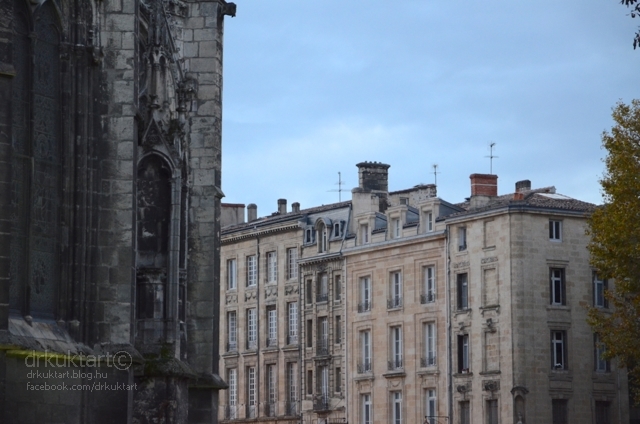
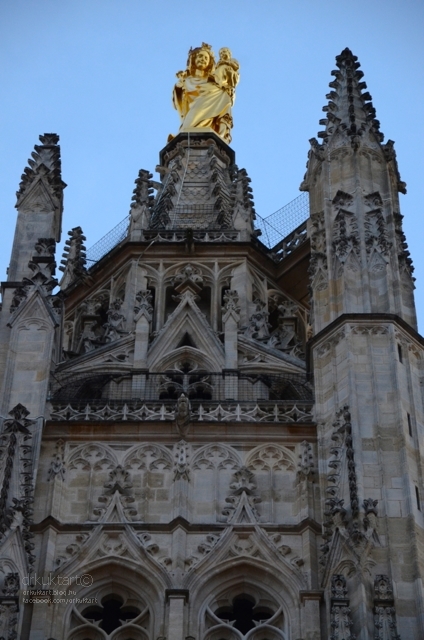
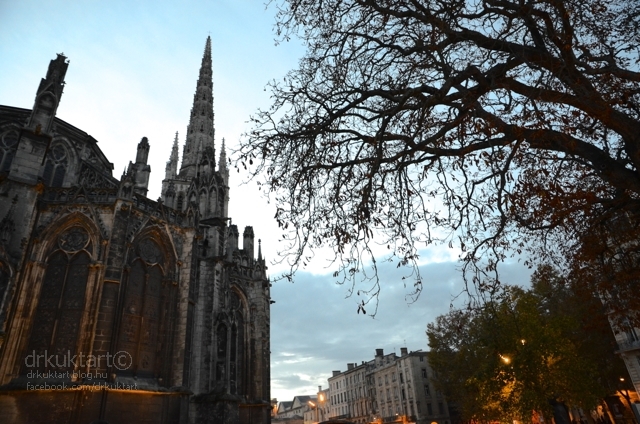
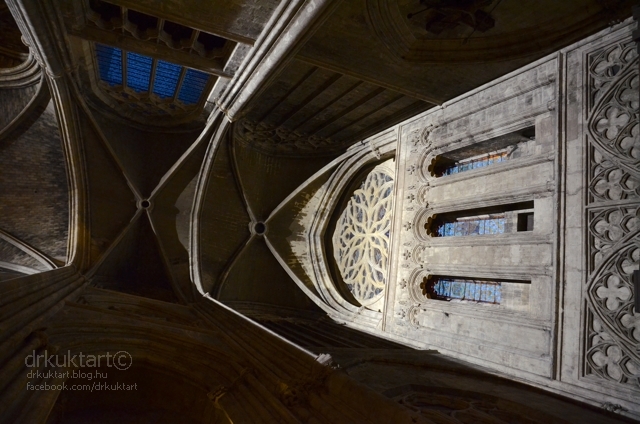
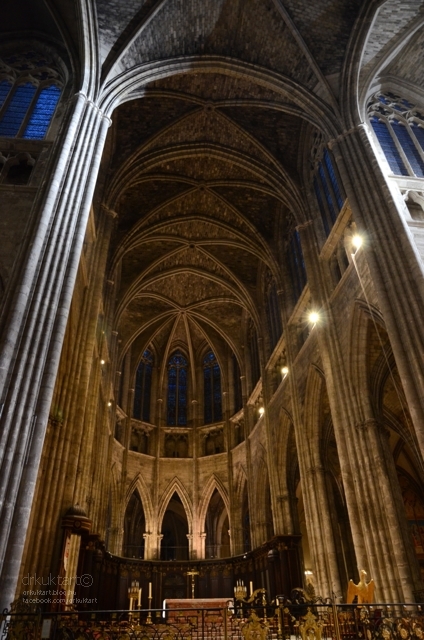
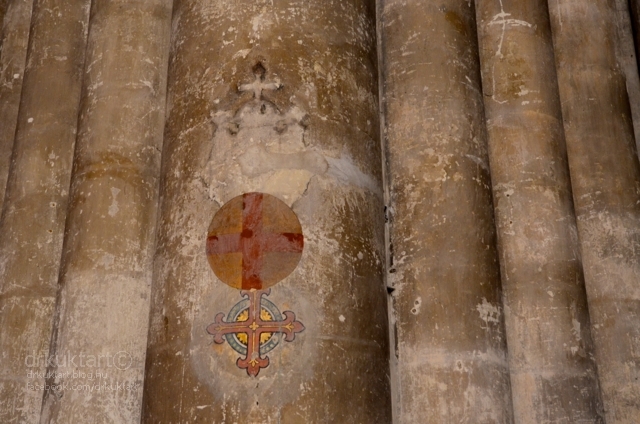
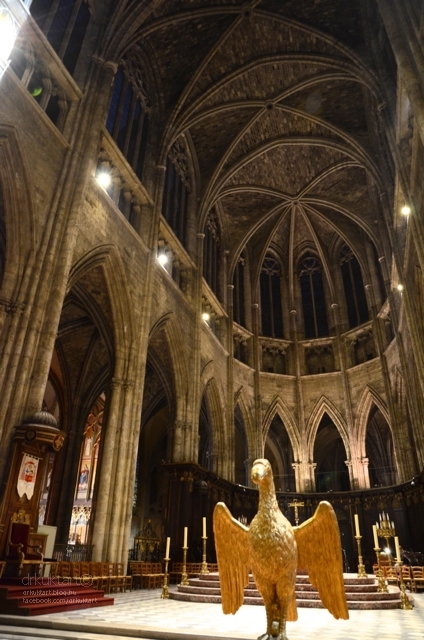

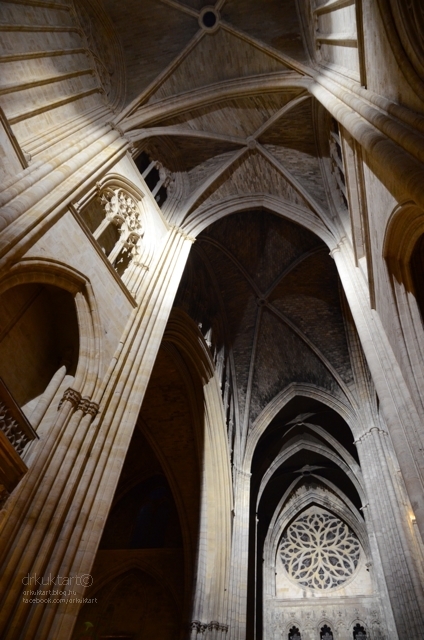
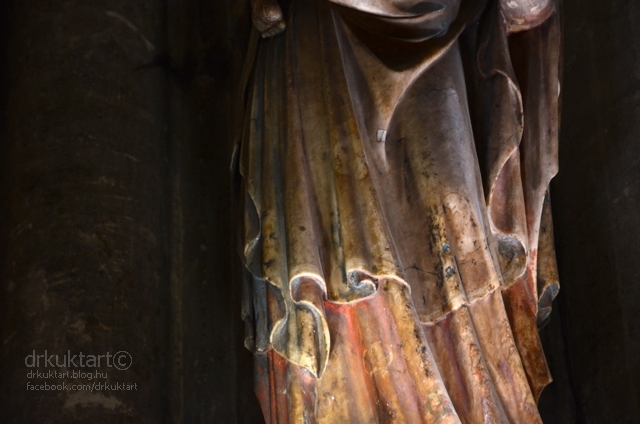
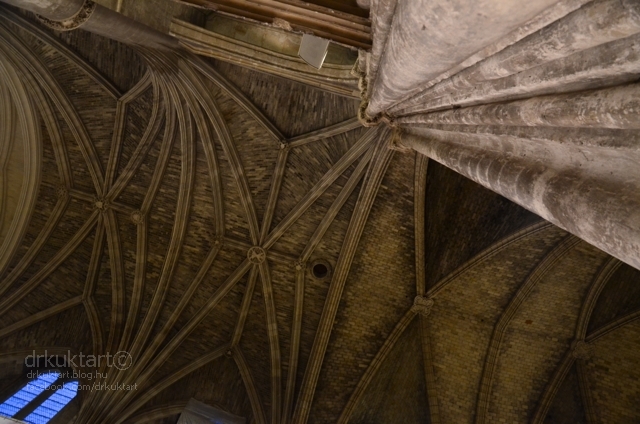
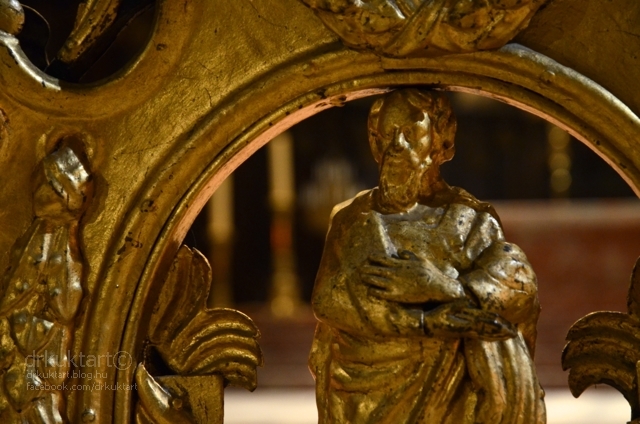
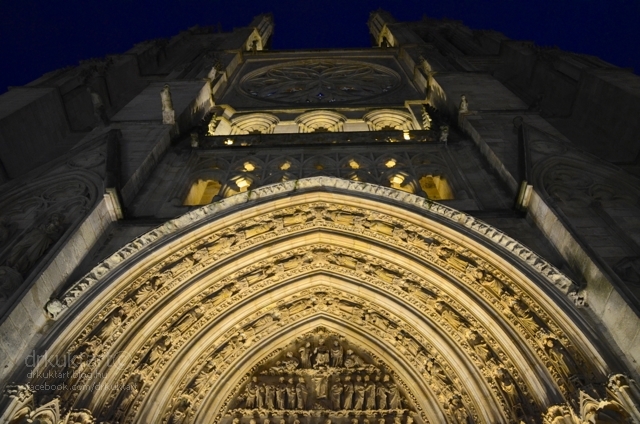
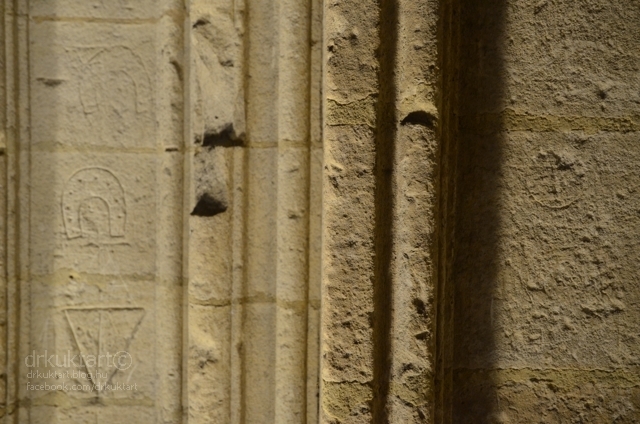

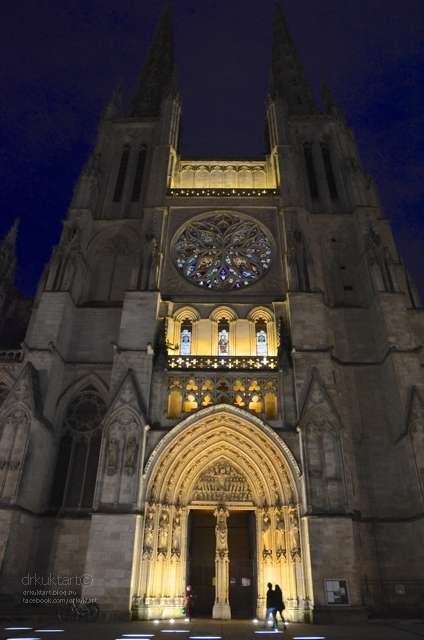
#2 Notre Dame
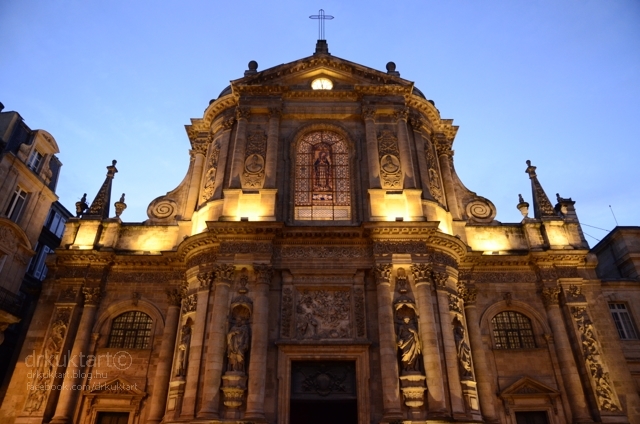
Amíg Bordeaux-ban nem jártam, élt bennem egy olyan tévképzet, hogy Notre Dame nevet kizárólag gótikus templom viselhet. Erre cáfol rá a Bordeaux-i Notre Dame, amely vegyesen visel román és barokk stílusjegyeket Bordeaux-ban csaknem egyedülálló módon. A templom és a mellette elnyúló Mably udvar (Cour Mably) a napjainkban fellelhető egyedüli nyomai a városban a XIII. századtól tevékenykedő Domonkos-rendi kolostornak. Az eredeti templom 1675-ben elbontásra került XIV. Lajos nagyívű építészeti elképzeléseinek köszönhetően. A napjainkban látható épületet Pierre Michel Duplessy építész tervezte, homlokzatát a Rómában található Gesú (Chiesa del Gesu) ihlette. A díszített külcsín meglehetősen egyszerű templombelsőt takar. A templom kápolnái közül számosban a szemet megtévesztő ún. trompe-l’œil freskók bújnak meg, amelyek a valójában két dimenzióban festett képeken szereplő tárgyakat trükkösen három dimenzióban megjelenítettként mutatják be. Ezek a festmények, csakúgy mint a Notre Dame-ban látható 10 darab vallásos témájú alkotás André barát (1662-1735) keze munkáját dicséri. A templom nagyméretű orgonája 1775-ből származik, és az itt tartandó vallásos zenei koncertek egyik főszereplője egész éven keresztül. A XIX. századból származó csodálatos üvegablakok Villiet és Hutrel, Bordeaux két elismert üvegművesének alkotásai. A Notre Dame-ot a 51 Rue Notre Dame alatti címen találod.
„Notre Dame is the most baroque and Romanesque-style church in Bordeaux. The church and Cour Mably (Mably Courtyard) are the only vestiges of a Dominican monastery going back to the 13th century. The original church was on the present-day Allées de Tourny (laid out in 1745) but, further to a revolt against Louis XIV, it was destroyed in 1675 to make way for construction of the Château Trompette. The architect Pierre Michel Duplessy drew up the plans and designed the facade, inspired by the church of the Gesù in Rome. As opposed to the ornate exterior, the interior decoration is surprisingly simple. The chapels feature numerous trompe-l’œil decors as well as a series of 10 religious paintings by Brother André (1662-1735). Dating from the 19th century, the beautiful stained glass windows are attributed to the master Bordeaux glassmakers Villiet and Hutrel. The great organ (1775) is used for concerts of religious music all year round. Located near the church, the Cour Mably is a beautiful courtyard out of time often used as a venue for concerts, films, and exhibitions.” Reference here.
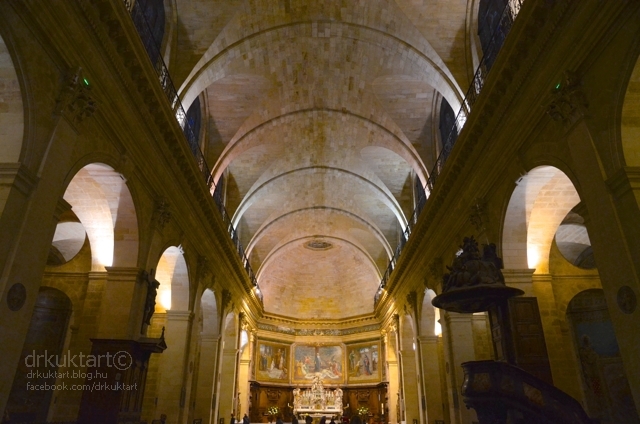
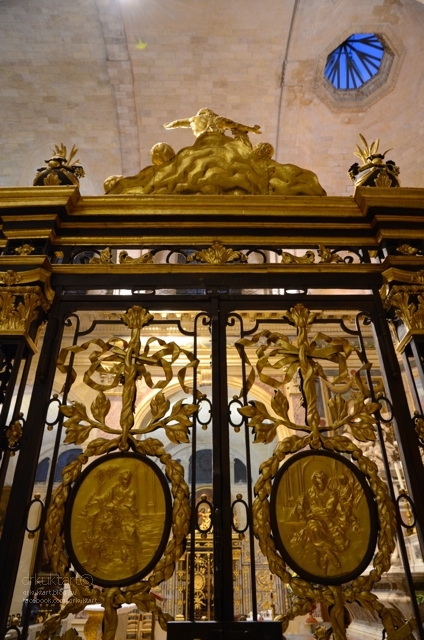
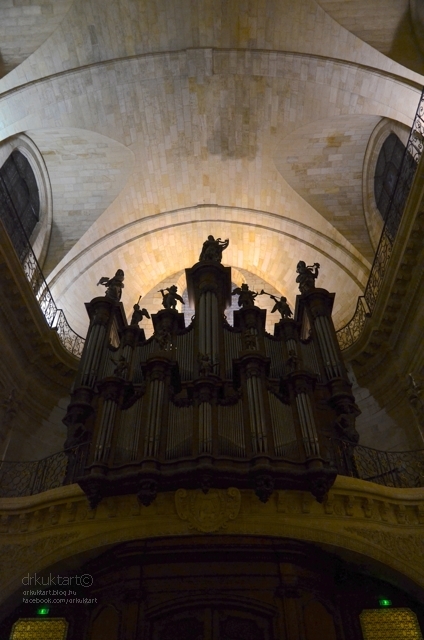
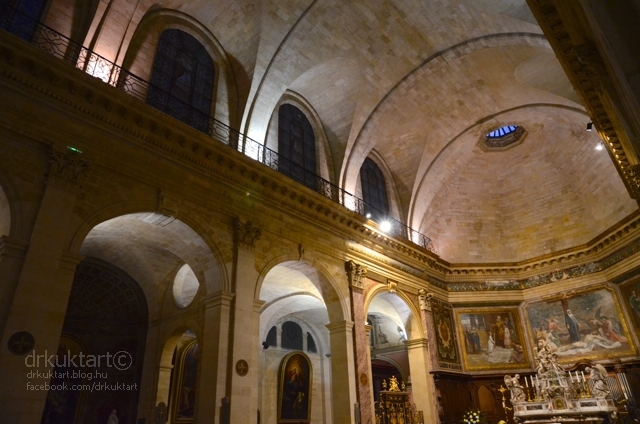
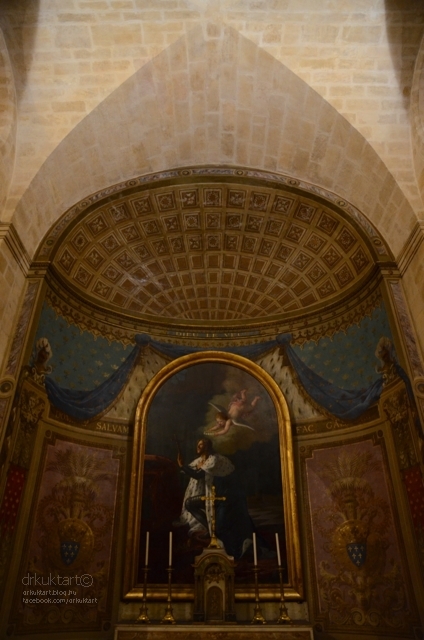
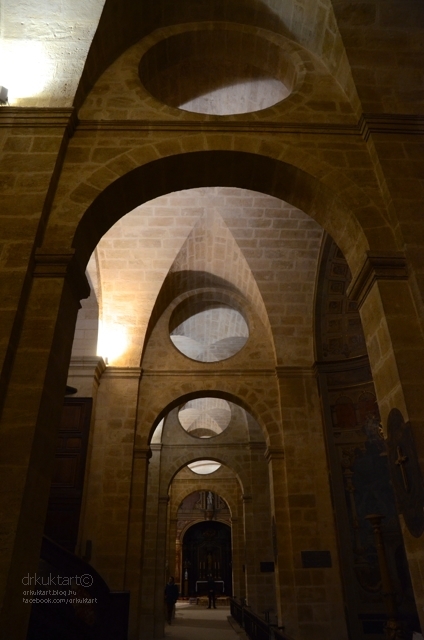
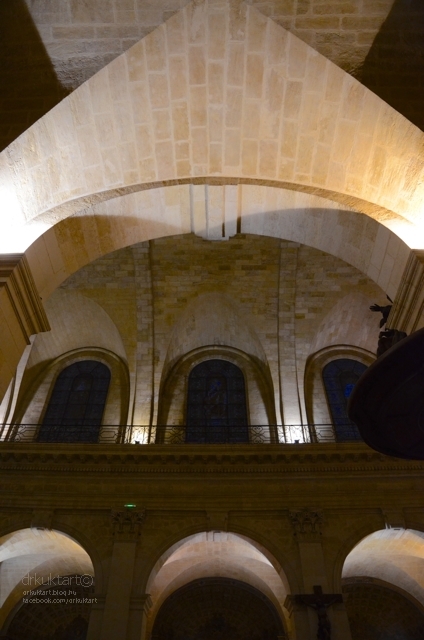
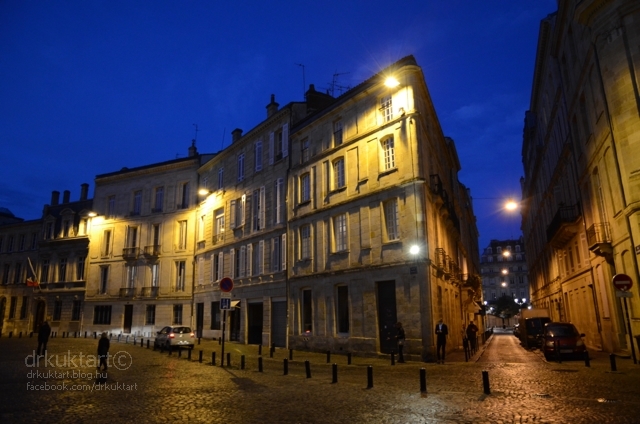
#3 Saint-Louis des Chartrons
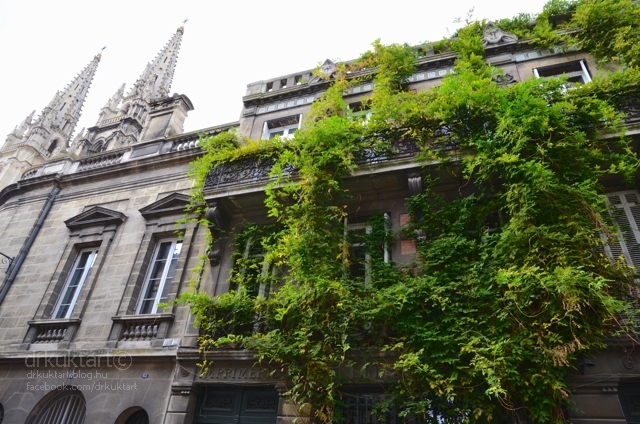
A csodálatos Saint-Louis des Chartrons templomra akkor akadtunk, amikor a Rue Notre Dame-on (aminek fura mód földrajzilag köze sincsen a Bordeaux-i Notre Dame-hoz) a Bordeaux-i bormúzeum felé tartottunk. Habár a bormúzeum egy erősen felejthető, és a kapott értékhez képest legalább drága mulatság volt, mégis megérte elsétálni erre, ha más miatt nem a csodálatos szűk utcácskák, alacsony házak és a templom okán. De ezek miatt biztosan. A környék szerény véleményem szerint délután a legszebb, amikor a felhők mögül előbújó nap fenéken csúszik a vizes macskakövekkel burkolt kacskaringós utcákon. Kicsit kihalt, de idilli környezet. A templom nevét az itt 1383-ban alapított első kolostor - "Nostra Dama Deus Chartrons"- neve után kapta, amely a Kartauzi rendhez tartozott. Maga a templom 1874-1879. között épült egy korábbi, 1726-os építésű kápolnának helyet adó telken. Az épületet Charles-Louis Brun építész tervezte neogótikus stílusban. Mint a legtöbb Bordeaux-i templom, ez is műemléki védettség alatt áll. A Saint-Louis des Chartrons rendelkezik az Aquitaine régió összes orgonája közül a legnagyobb orgonával és a templom biztosít helyet a minden évben megrendezendő orgona koncerteknek. A templomot 51 Rue Notre Dame alatt találod.
„Saint-Louis des Chartrons church is situated in one of Bordeaux’ less visited zones, the district of Chartrons, North from the old town. The name Chartrons comes from the first monastery "Nostra Dama Deus Chartrons" founded here in 1383 by monks belonging to the Order of Chartreux (or the Carthusian order). The Saint Louis de Chartron church was built between 1874 and 1879, on the site of an older chapel built in 1726, and is the work of the architect Charles-Louis Brun. It is a typical neo-gothic construction listed as Historic Monument. The church houses the biggest symphonic organ of the Aquitaine region and is the site of year-round organ concerts.” Reference here.
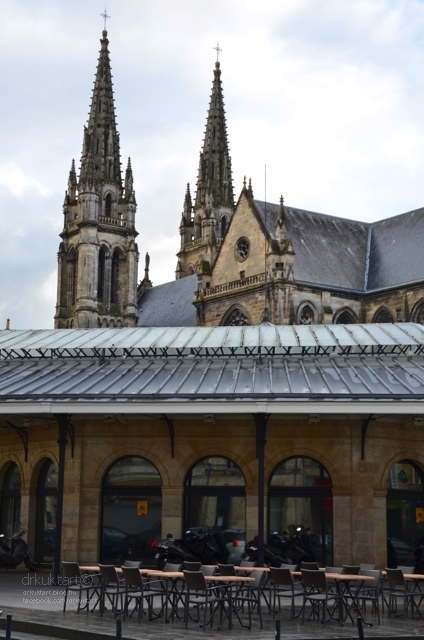
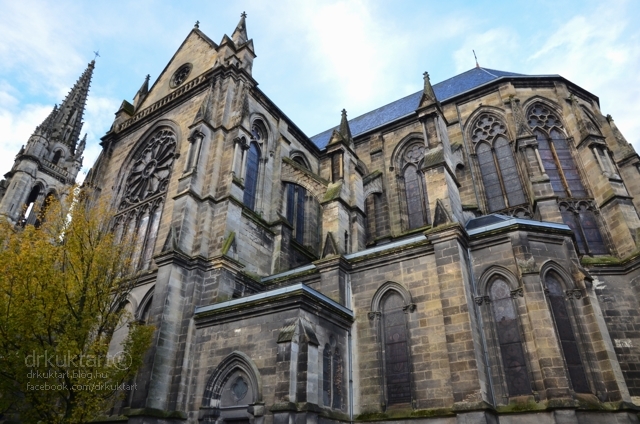
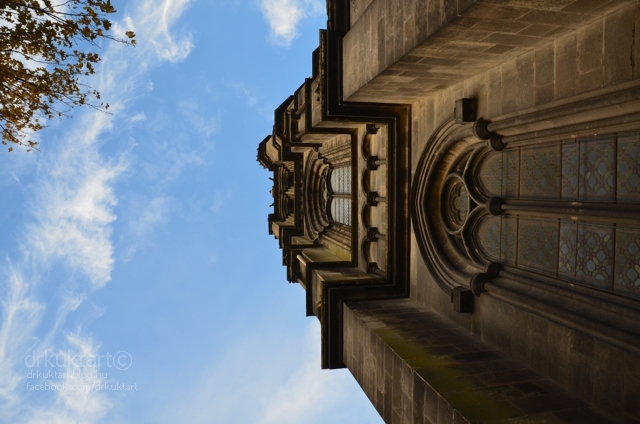
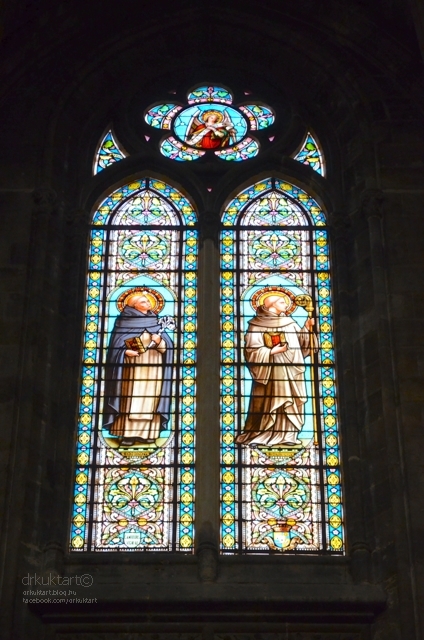
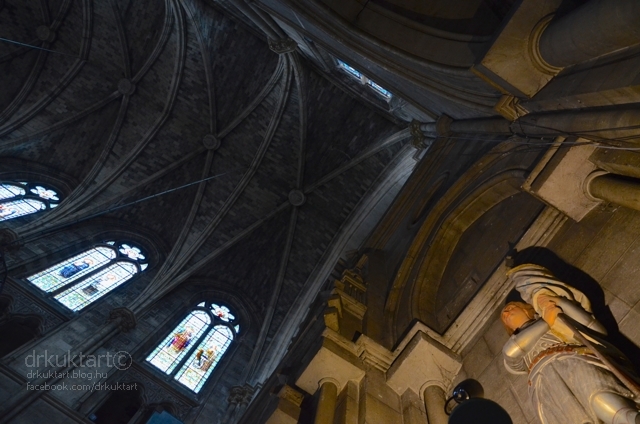
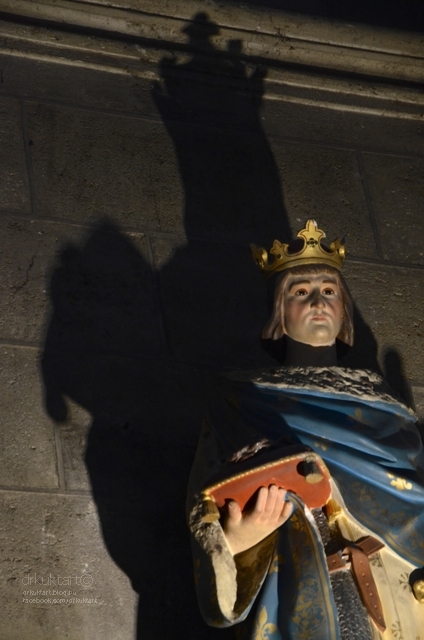
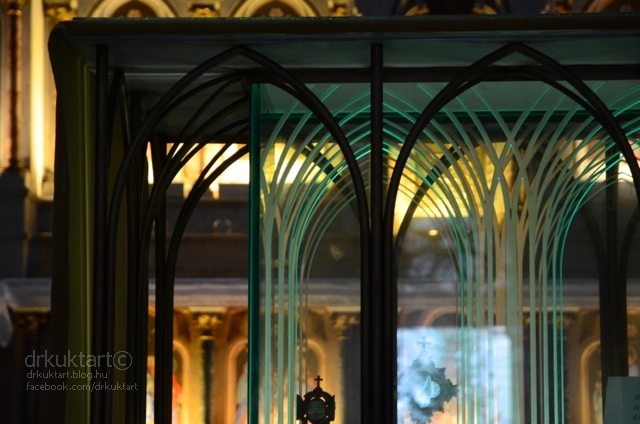
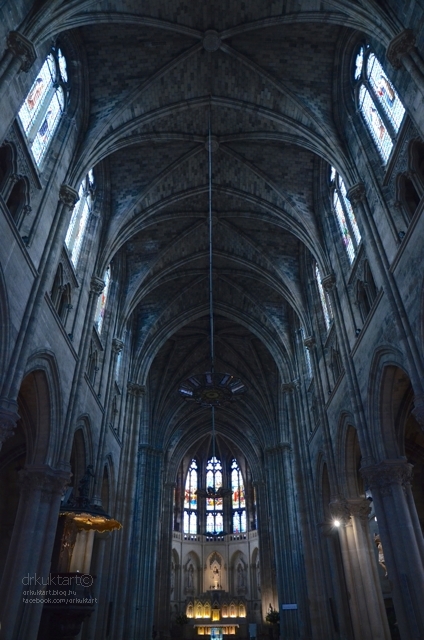
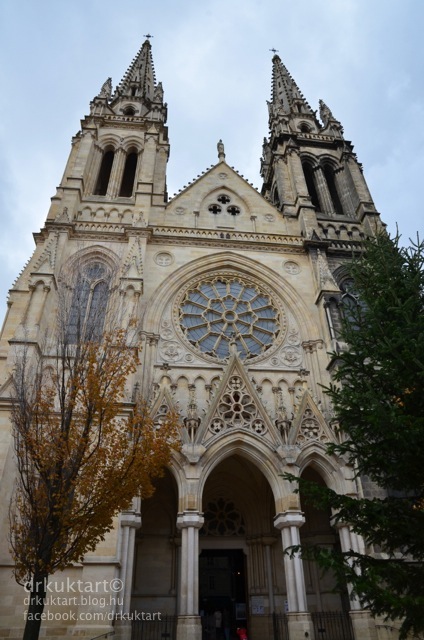
#4 Basilique Saint Michel
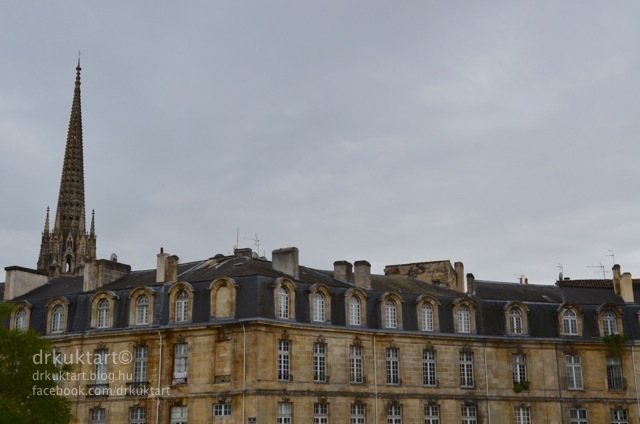
A következő, s egyben utolsó templom, amit kerítés mögül távolról, egy ad hoc zsibvásártól ölelve szemügyre vettünk a Szent Mihály Bazilika (Basilique Saint Michel). A bazilika túldíszített gótikus épülete a XIV. és XVI. század között épült. Állítólag a szószéken Szent Mihály szobra látható, amint éppen leöli a sárkányt. Az 1940-es bombázás során a templom üvegablakai elpusztultak. A szintén külön álló, 114 méter magas harangtorony a XV. század folyamán épült és Dél-Franciaország legmagasabb ilyen harangtornya. 1881-ben számos mumifikálódott testet rejtő galloromán (rómaiak által romanizált kelta) temetőt és katakomba rendszert fedeztek fel a harangtorony alatt. A templom történelmi műemlék védettséggel bír. A bazilikát az alábbi címen találod meg: Place Meynard, 33800 Bordeaux, France.
the next and last church was closed during our visit and bordered by ugly fences. „The Basilica of St. Michael, Bordeaux, is a Flamboyant Gothic church in Bordeaux, France, built between the end of 14th century and the 16th century. The pulpit represents Saint Michael slaying the dragon. The stained-glass windows were destroyed during the bombardment of 1940. The separate bell tower, which is 114 meters tall, was built in the 15th century. In 1881 a Gallo-Roman cemetery and catacombs were discovered under the tower, with several naturally mummified bodies. The church is a listed historical monument.” Reference here http://en.wikipedia.org/wiki/Basilica_of_St._Michael,_Bordeaux.
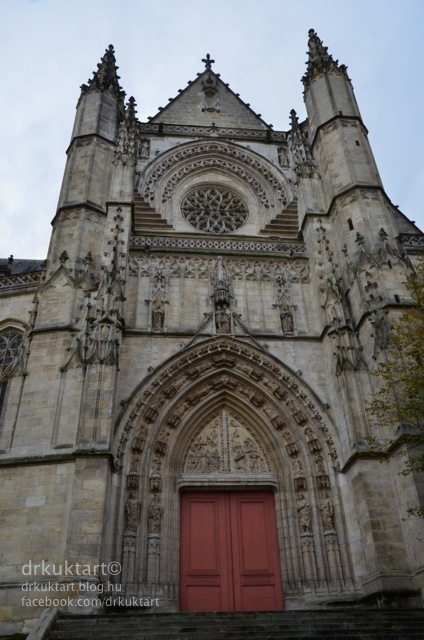
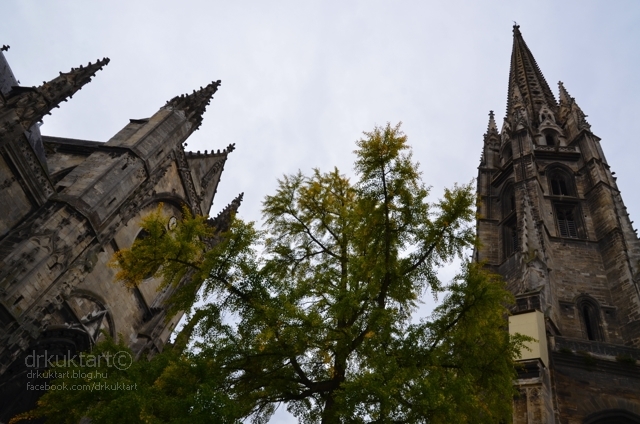
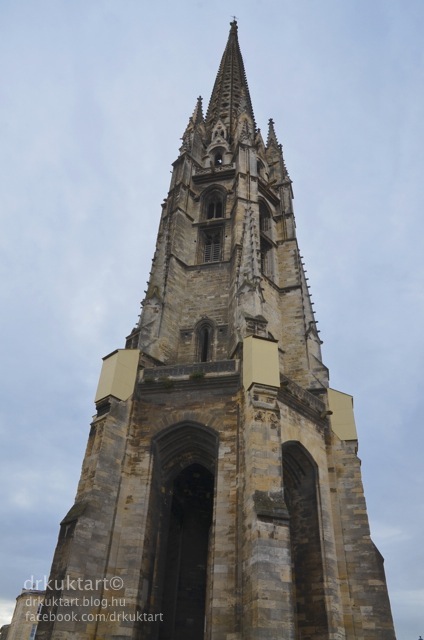
Mielőtt meglepődnél vagy megijednél, hogy Bordeaux-ban csak templomok vannak, szólok, hogy ez így természetesen nem igaz. Kedvcsinálónak less csak bele a Miért pont Bordeaux? című bejegyzésembe, amiben tippeket találsz arra, hogy miért válaszd ezt a várost úticélnak. Ha tetszett a bejegyzés, kövesd a DRKUKTART blogot Facebook-on ITT és Instagram-on ITT, vagy, ha úgy tetszik értesülj a friss bejegyzésekről a Bloglovin segítségével!
Szép napot kívánok!
If you're interested in more feature of Bordeaux or need idea what to do there, read my article about the city here. If you like the post, follow me on Facebook HERE or Instagram HERE to be notified about every new post. Follow my blog with Bloglovin!
Have a nice day!
DRKUKTA




